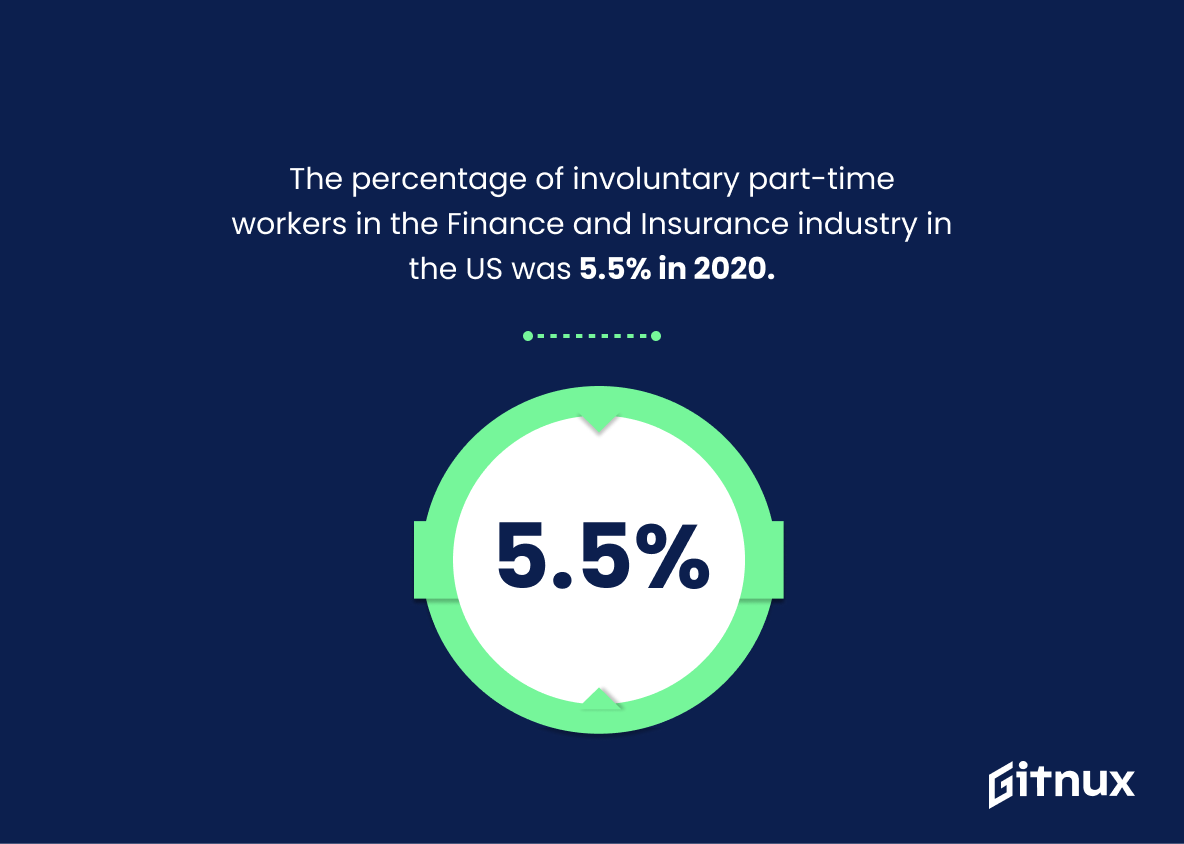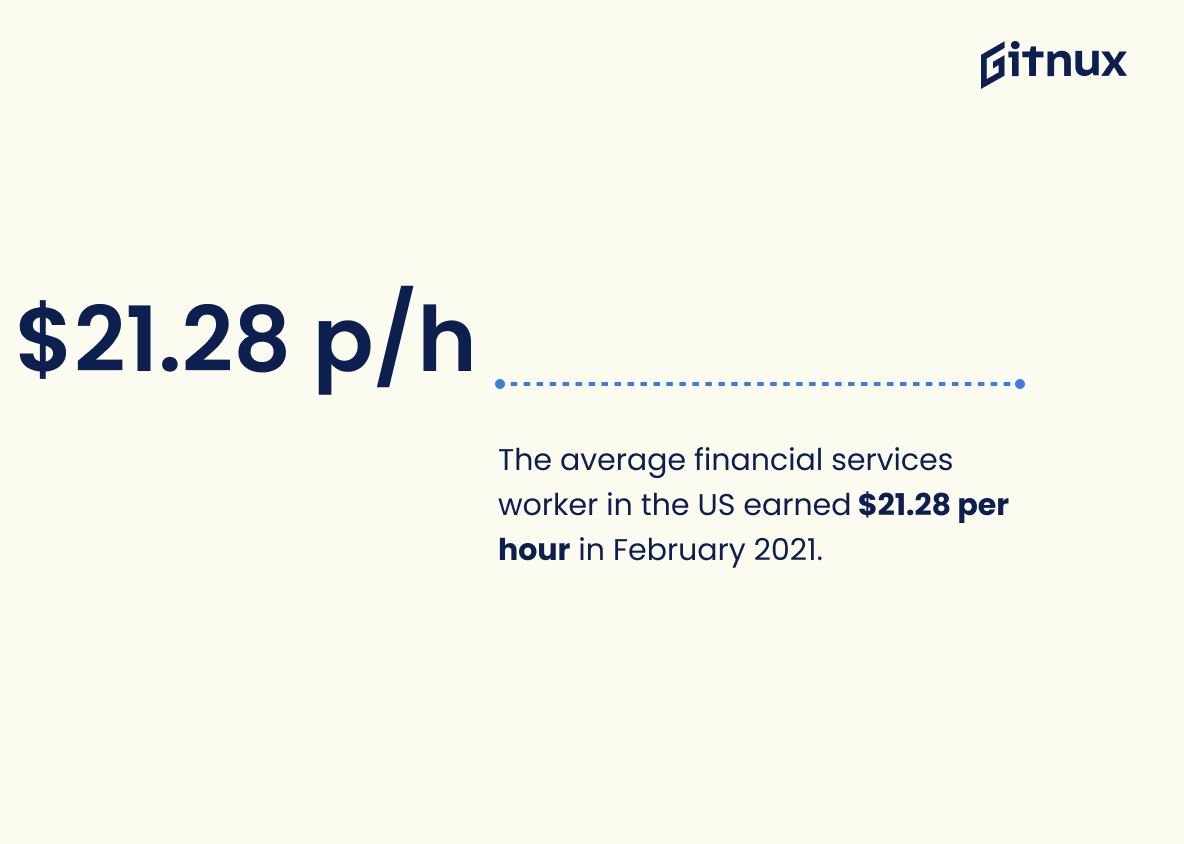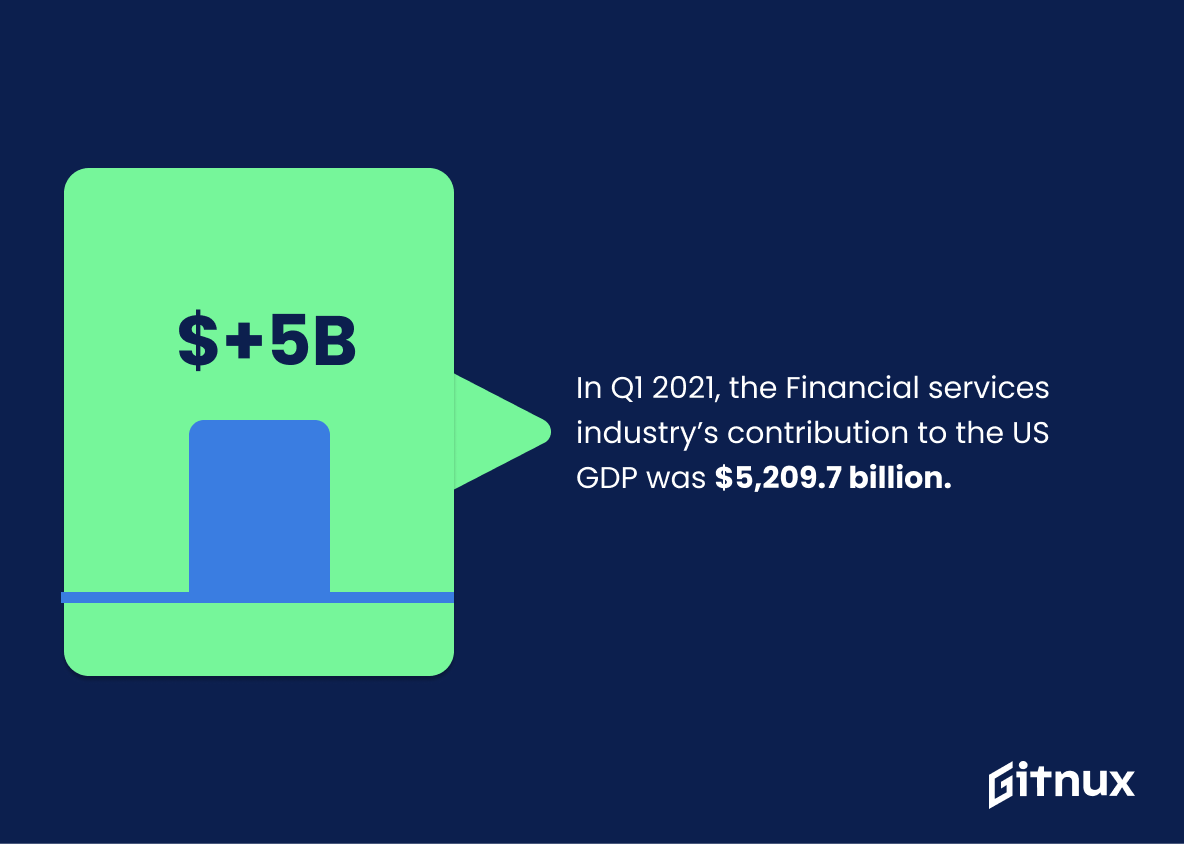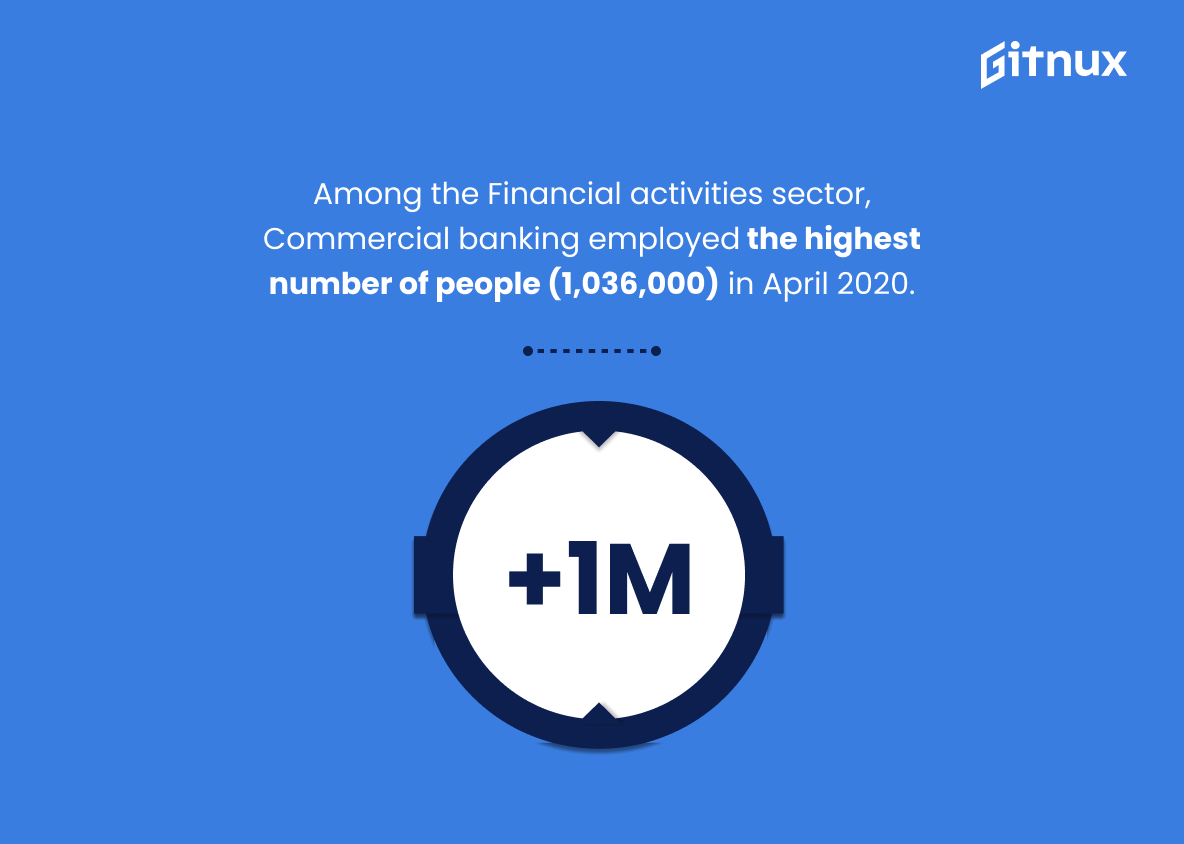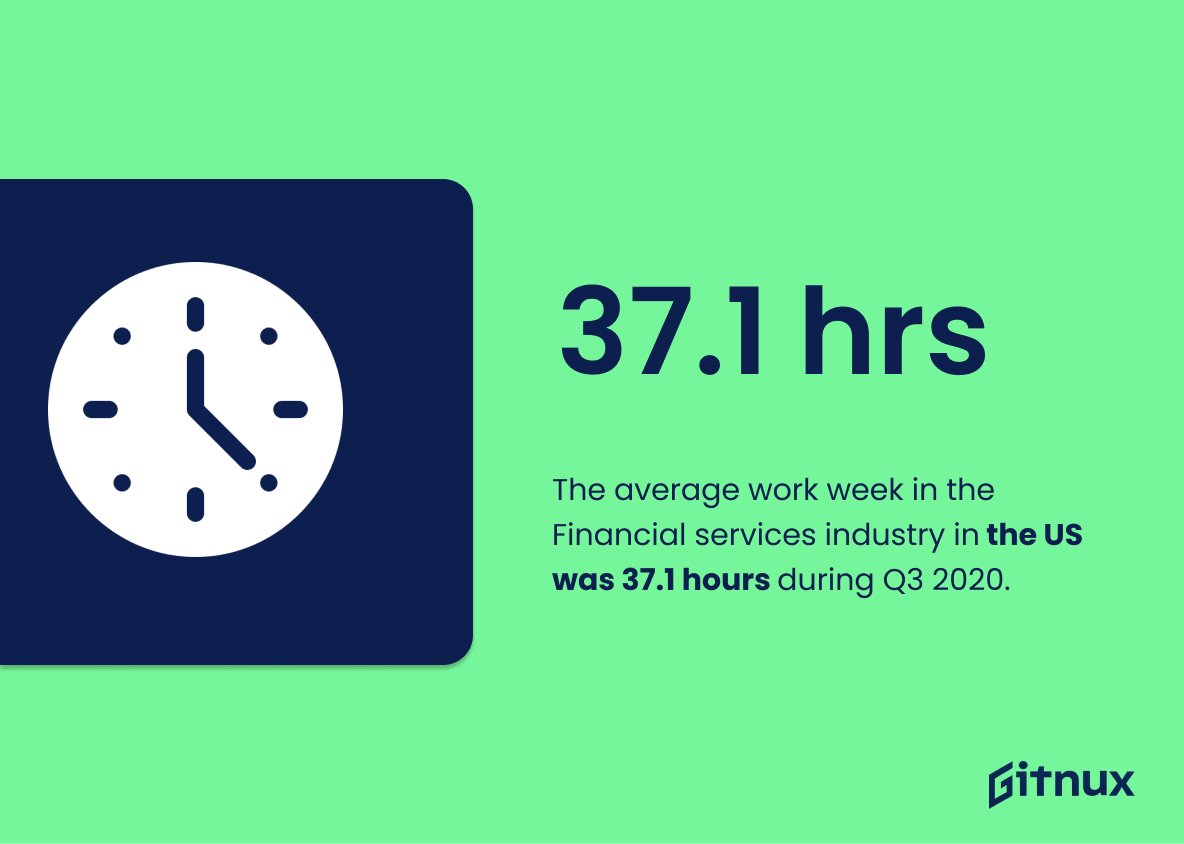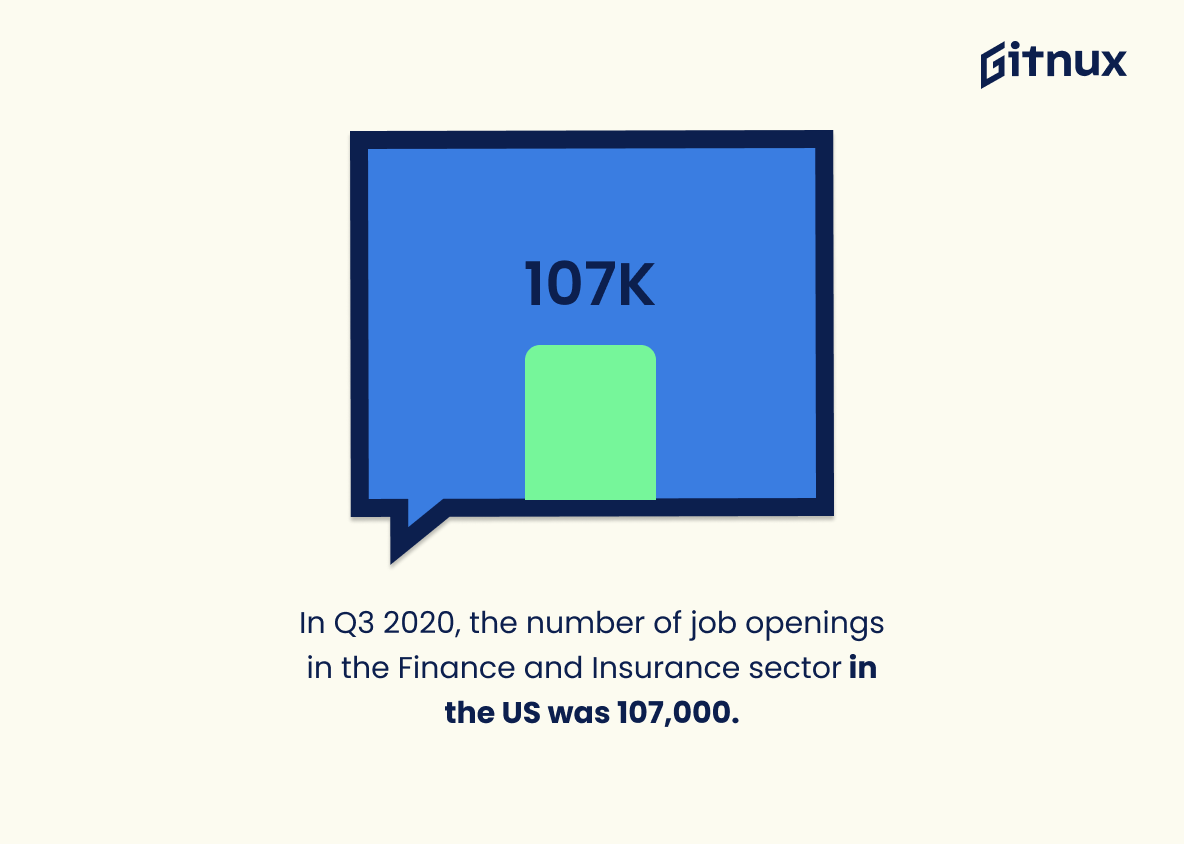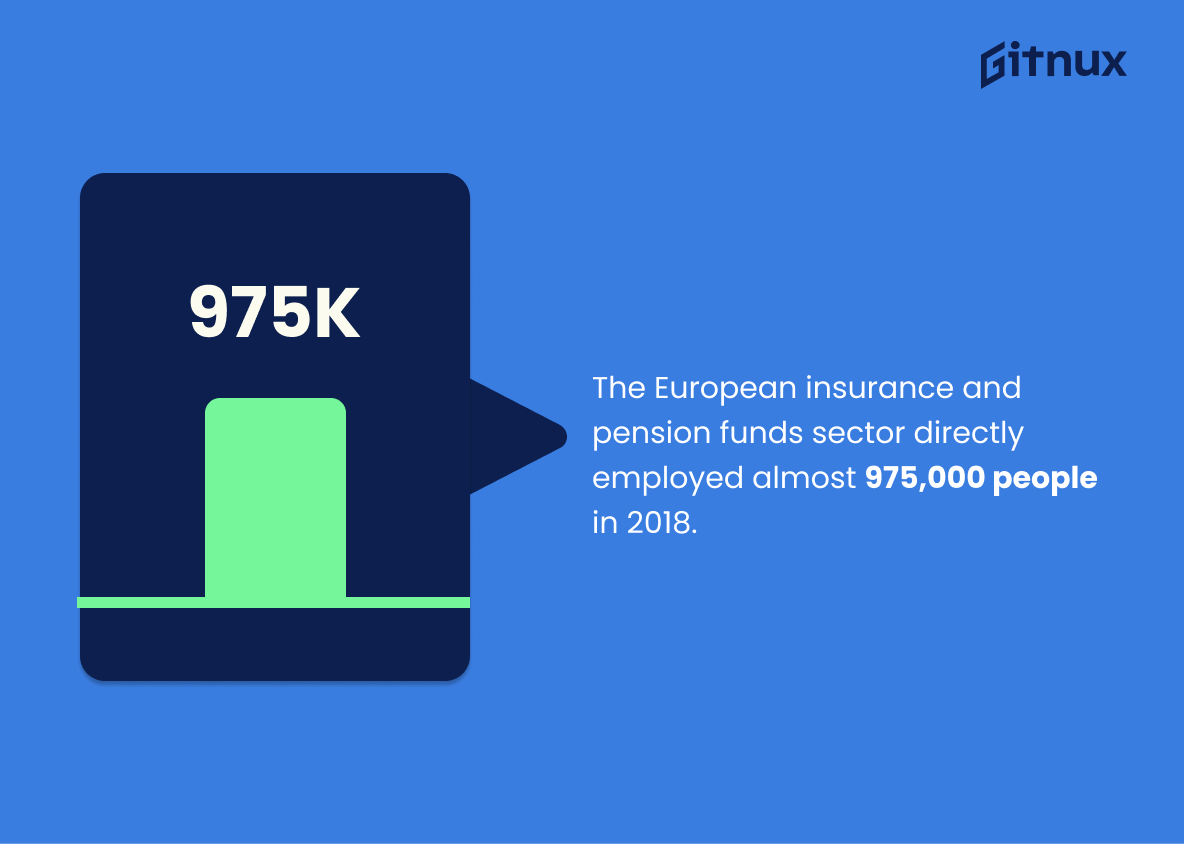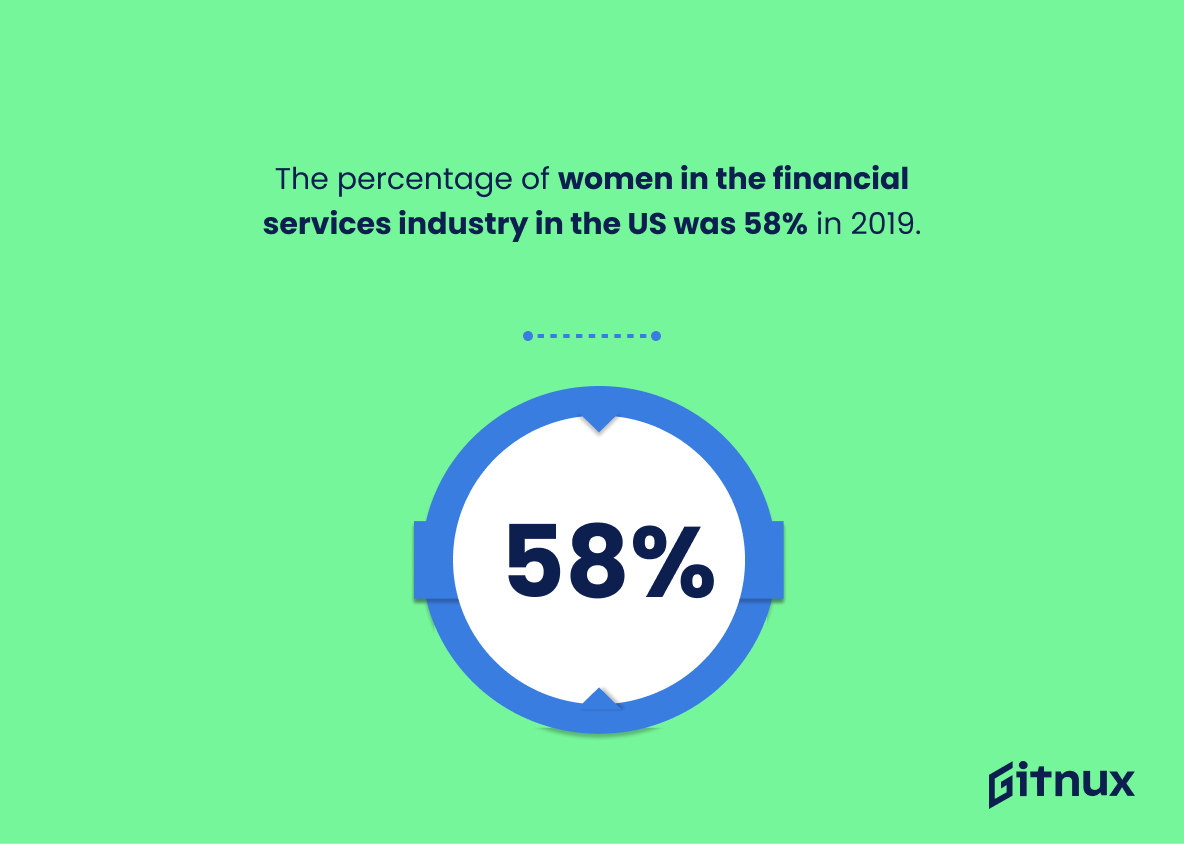The US job market has seen a steady recovery since the start of 2021, with 559,000 jobs added in May and an unemployment rate falling to 5.8%. In April 2021, the US unemployment rate was 6.1%, while employment in Finance and Insurance services comprised 6.29 million people in March 2021. Total employed persons in the Financial Activities sector reached 8,818,000 by June 2021; meanwhile mean annual wage for this industry was $84,720 as of May 2020 and its employment-population ratio stood at 58% that same month.
Involuntary part-time workers made up 5.5% of those employed within this sector during 2020; 32.6% worked from home that year too according to BLS data released last year – a figure which is projected to grow 9.6% between 2016–2026 based on current trends observed over recent years.. The average financial services worker earned $21 per hour back February 2021 whilst contributing around $5 trillion towards GDP (Q1/2021). Commercial banking had highest number employees (over 1 million) amongst all subsectors under finance activities category during April 2020 – working 37 hours per week on average throughout Q3/2020 period . Women accounted for 58 percent workforce across entire financial service industry 2019 onwards whereas overall unemployment rate 3rd quarter remained low at 3%. Average salary paid out EU wide €67K annually making it one of most lucrative industries worldwide today.
Employment In FSR In The US Statistics Overview
Employment in Finance and Insurance services in the US comprised 6.29 million people in March 2021.
This statistic is a powerful indicator of the strength of the finance and insurance services sector in the US. It shows that despite the economic downturn caused by the pandemic, the sector has managed to remain resilient and continues to employ a large number of people. This statistic is a testament to the strength of the US economy and its ability to weather difficult times.
Total employed persons in the Financial Activities sector in the US reached 8,818,000 in June 2021.
This statistic is a powerful indicator of the strength of the Financial Activities sector in the US. It shows that the sector is continuing to grow and create jobs, despite the economic challenges of the past year. This is a positive sign for the US economy, as it suggests that the sector is resilient and capable of providing employment opportunities for many Americans. This statistic is also important for understanding the overall employment picture in the US, as it provides insight into the health of one of the most important sectors of the economy.
The mean annual wage in the Financial activities industry in the US was $84,720 as of May 2020.
This statistic is a valuable insight into the financial activities industry in the US, providing a snapshot of the average annual wage for those employed in the sector. It is an important piece of information for anyone looking to gain an understanding of the employment landscape in the US, as it gives an indication of the potential earnings for those working in the financial activities industry.
In January 2021, the employment-population ratio for the Financial activities industry was 58.0%.
This statistic is a telling indicator of the state of employment in the Financial activities industry in the US. It provides a snapshot of the number of people employed in the industry relative to the total population, giving us an idea of the industry’s ability to provide jobs. This statistic is especially important in the context of the US economy, as the Financial activities industry is a major contributor to the country’s GDP. By understanding the employment-population ratio, we can gain insight into the health of the industry and the overall economy.
The percentage of involuntary part-time workers in the Finance and Insurance industry in the US was 5.5% in 2020.
This statistic is a telling indication of the state of employment in the Finance and Insurance industry in the US. It reveals that a significant portion of the workforce in this sector is working part-time involuntarily, which could be a sign of a lack of job security and stability. This statistic is an important piece of information for anyone looking to gain insight into the employment situation in the US Finance and Insurance industry.
In 2020, 32.6% of workers in the Finance and Insurance industry in the US worked from home.
This statistic is a telling indication of the impact of the pandemic on the Finance and Insurance industry in the US. It highlights the fact that a significant portion of the workforce in this sector had to transition to remote work in 2020, which has had a profound effect on the industry. This statistic is an important piece of information when considering the overall employment statistics in the US, as it provides insight into the changes that have taken place in the Finance and Insurance industry.
The job growth rate in the Finance and Insurance sector in the US from 2016 to 2026 is projected to be 9.6%.
This statistic is a crucial indicator of the future of employment in the finance and insurance sector in the US. It provides insight into the potential for job growth in the sector over the next decade, giving readers an idea of the opportunities that may be available in the near future. By understanding the projected job growth rate, readers can make informed decisions about their career paths and the potential for success in the finance and insurance sector.
The average financial services worker in the US earned $21.28 per hour in February 2021.
This statistic is a valuable insight into the current state of employment in the financial services sector in the US. It provides a snapshot of the average hourly wage of financial services workers in February 2021, giving readers an indication of the level of remuneration they can expect to receive in this field. This information can be used to inform decisions about whether to pursue a career in the financial services sector, and can also be used to compare wages across different industries.
In Q1 2021, the Financial services industry’s contribution to the US GDP was $5,209.7 billion.
This statistic is a powerful indicator of the importance of the Financial services industry in the US economy. It demonstrates the sheer size of the sector and its contribution to the nation’s GDP, highlighting the significance of the industry in terms of job creation and economic growth. It is a key factor to consider when discussing employment in the Financial services industry in the US.
Among the Financial activities sector, Commercial banking employed the highest number of people (1,036,000) in April 2020.
This statistic is significant in understanding the employment landscape in the US Financial activities sector. It highlights the importance of Commercial banking in providing jobs to a large number of people, and serves as a reminder of the sector’s importance to the US economy.
The average work week in the Financial services industry in the US was 37.1 hours during Q3 2020.
This statistic is a valuable insight into the employment landscape in the Financial services industry in the US during Q3 2020. It provides a snapshot of the average amount of hours worked by employees in the sector, which can be used to compare with other industries and to track changes over time. This information can be used to inform decisions about hiring, training, and other employment-related matters. Additionally, it can be used to assess the impact of economic and other factors on the industry, and to identify potential areas for improvement.
In Q3 2020, the number of job openings in the Finance and Insurance sector in the US was 107,000.
This statistic is a telling indication of the state of employment in the Finance and Insurance sector in the US. It shows that despite the economic downturn caused by the pandemic, there are still a significant number of job openings in this sector, indicating that the sector is still in demand and that there are opportunities for those looking for work in this field.
In February 2021, there were 8,721,000 employees in the financial services industry, a 0.8% increase over the previous year.
This statistic is a testament to the resilience of the financial services industry in the US, despite the economic challenges of the past year. It shows that the sector is continuing to grow and create jobs, providing a much-needed boost to the US economy. This is an encouraging sign for those looking for employment in the financial services industry, as it indicates that the sector is still a viable option for job seekers.
The European insurance and pension funds sector directly employed almost 975,000 people in 2018.
This statistic is a powerful reminder of the importance of the European insurance and pension funds sector in terms of employment. It highlights the fact that this sector is a major employer in Europe, providing jobs for almost a million people in 2018 alone. This is a significant contribution to the overall employment figures in Europe, and it is a reminder of the importance of this sector in terms of providing employment opportunities.
The percentage of women in the financial services industry in the US was 58% in 2019.
This statistic is a powerful indicator of the progress being made in the financial services industry in the US. It shows that women are increasingly being given the opportunity to work in this sector, and that the industry is becoming more diverse and inclusive. This is an important step forward in terms of creating a more equitable workplace, and it is encouraging to see that the financial services industry is taking steps to ensure that everyone has an equal chance to succeed.
The unemployment rate for the Finance and Insurance industry in the US in May 2021 was 3.3%.
This statistic is a crucial indicator of the health of the Finance and Insurance industry in the US. It provides a snapshot of the current employment situation in the sector, showing that the unemployment rate is relatively low. This is important information for anyone interested in the employment prospects in the Finance and Insurance industry, as it suggests that the sector is doing well and that there are plenty of job opportunities available.
Conclusion
The US job market has seen a steady recovery since the start of 2021, with 559,000 jobs added in May and an unemployment rate falling to 5.8%. Employment in Finance and Insurance services comprised 6.29 million people in March 2021 while total employed persons reached 8,818,000 by June 2021. The mean annual wage for this industry was $84,720 as of May 2020 and the employment-population ratio stood at 58% that same month.
Involuntary part-time workers accounted for 5.5% of those employed within Financial activities sector last year while 32.6% worked from home during 2020 due to pandemic restrictions imposed across the country; projections indicate a 9.6% growth rate between 2016 – 2026 period for this sector alone.
On average financial services worker earned $21 per hour in February 2021 contributing over five trillion dollars towards GDP that quarter whereas Commercial banking had highest number (1M) employees among all subsectors back April 2020 working 37 hours/week on average earning 54 % more than other industries ($67K). Women made up majority (58%) workforce here 2019 onwards whilst 3rd party insurance & pension funds directly hired almost 1M personnel 2018 EU wide with respective unemployment rates being 3&3 respectively come May 21st Overall these figures demonstrate positive outlook regarding future prospects within finance & insurance sectors both domestically & abroad despite current economic climate making it ideal time pursue career opportunities therein
References
0. – https://www.fred.stlouisfed.org
1. – https://www.dol.gov
2. – https://www.efama.org
3. – https://www.bls.gov
4. – https://www.catalyst.org
5. – https://www.marketwatch.com




